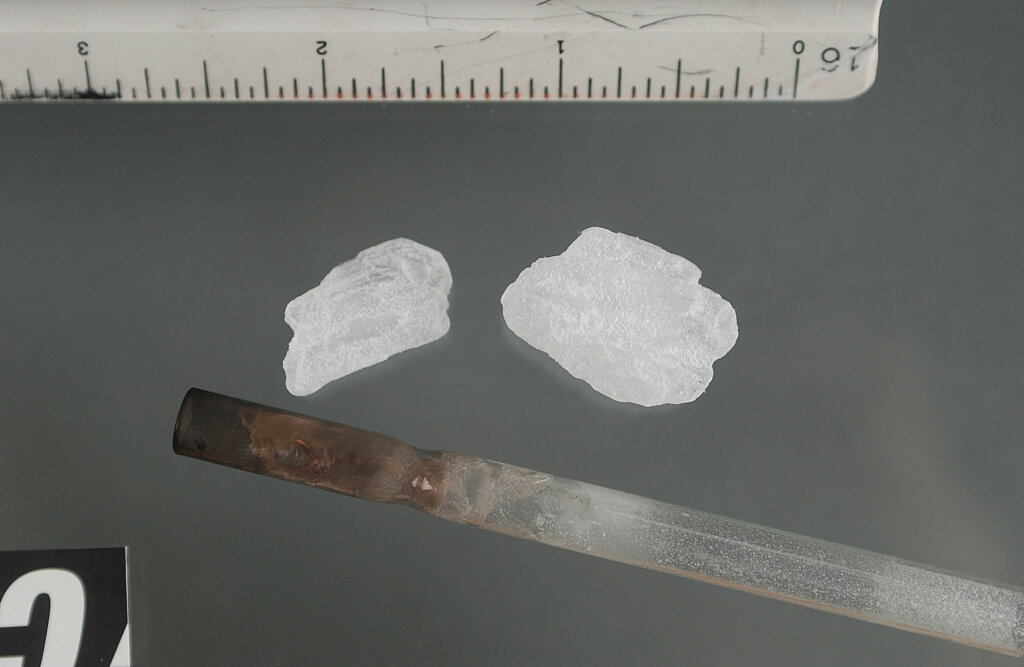COURT HOUSE – The Drug Enforcement Agency (DEA) released numbers Feb. 1 that should give pause to those fighting a tenacious opioid epidemic in New Jersey.
The release, entitled “Meth on the Rise in New Jersey,” spoke of an “evolving methamphetamine threat concentrated in the southern regions of New Jersey.”
To support that conclusion, the DEA reported that its Northeast Regional Laboratory had seen an over 5,000% increase in the total weight of “exhibits analyzed” from the state between 2015-2017.
In September 2013, “Breaking Bad,” one of cable television’s biggest hit shows, ended its five-year run. The series told the story of a high school chemistry teacher, whose mid-life crisis and cancer diagnosis led him down a path of producing and selling methamphetamines.
Following a period in the 1980s and 1990s, in which cocaine was the drug in the news, with stories of Colombian cartels battling each other from California to Miami, the United States saw a rapid rise of homebrew methamphetamines in the new century, complete with exploding meth labs and dealer biker gangs.
While the methamphetamine problem was always bigger in the West, in April 2019, the DEA released information on nine home meth labs discovered in New Jersey.
While none were in Cape May County, two were in Millville and Bridgeton. These were busted before the new spike in the state’s estimated meth use referenced in the February release.
The Rise, Fall and Rise of Meth
Methamphetamine is a highly addictive stimulant that impacts the central nervous system. It can even leave structural and functional changes in the brain.
Known by various names, such meth, ice, blue, crystal, and glass, methamphetamine is the product of a laboratory, and does not grow in fields like poppies that produce heroin. Meth can take many forms, but is most often seen as a white crystalline powder that dissolves quickly in water.
In a shiny form resembling shards of glass, the drug is known as crystal meth. It can be injected, snorted, smoked, or ingested as a pill.
Meth, first synthesized in Japan, in 1893, was used in its early years as a weight loss medication and to treat narcolepsy. During World War II, troops often used meth to stay awake and alert. Finally, it was outlawed in the United States in 1970.
Related drugs, controlled FDA-approved substances, are used to treat attention deficit hyperactivity disorder (ADHD). Illegal forms of the drug produce a rapid, intense high that is known for its long duration.
Related pills, known as Bennies, were part of the Beat Generation culture of the 1950s.
Illegal use of crystal meth exploded in the mid-1990s through the early 2000s.
In 2006, the United Nations termed methamphetamine the most abused drug in the world. By 2005, Congress passed the Combat Methamphetamine Act, attempting to restrict access to the ingredients used in illegal domestic production.
For a period, meth receded as public enemy drug number one, replaced by the growing scourge of prescription pain killers.
America’s opiate epidemic was underway.
The Northeast was never free of heroin use. The recent rise of fentanyl took deeper root in this area of the country than in others. Dominance among the leading controlled substances is mostly a regional issue.
Meth began a comeback several years ago, this time dominated by Mexican drug cartels. Use in the West grew rapidly to the point where the National Forensic Laboratory Information System (NFLIS) reported meth was far and away the most frequently identified drug in the Western states.
Of the regions categorized in Drug Enforcement Agency reporting, the Northeast has had the lowest level of meth use, determined by amounts of illegal drug seizures and state and local laboratory identification of drug reports tied to criminal activity.
New Jersey May be Part of Expanding Market
New Jersey had its problems, but methamphetamine use, always present at some level, was not at the top of the list. The February DEA report shows that times are changing.
No longer predominantly a homegrown product, the drug is largely from Mexico with a “very high level of purity.”
The DEA states it is becoming a “drug of choice” in some of the state’s rural areas.
DEA professionals conclude that the Sinaloa cartel is attempting to expand its market for crystal methamphetamine in southern New Jersey.
The growing popularity of the drug, owing in part to a rise in purity and a drop in street price, was aided, DEA officials say, by the diversion of attention on the all-out battle against the opioid crisis of the last several years.
Quest Diagnostics, the nation’s largest diagnostic services provider, reported in 2018 a 150% rise in methamphetamine identification in its New Jersey Region. Quest data is drawn from the result of employment-related drug testing.
The DEA noted that meth use is increasing, in part, because individuals are using it to combat the symptoms of heroin withdrawal.
Officials also note that functioning heroin users often turn to meth to get through the workweek without exhibiting symptoms of heroin withdrawal.
The College on Problems of Drug Dependency, a long-standing group that began as part of the National Academy of Sciences, reported skyrocketing numbers of opioid users seeking treatment and reporting using meth to control withdrawal symptoms.
The use of crystal meth, a specific form of the drug, went up dramatically between 2011 and 2017. Mixing the drugs is creating new dangers.
Fentanyl is the big killer responsible for most overdose deaths in the Centers for Disease Control (CDC) Region 2, which includes New Jersey.
Fentanyl deaths include growing numbers that involve either heroin or cocaine. Meth-involved overdose deaths are highest in the West, but the warning from DEA and NFLIS is that the threat of methamphetamine may be growing in the East. The evidence appears to support the warning.
Cape May County
Is there a rise in methamphetamine use in Cape May County? Anecdotal evidence suggests so, but it may be too early to see in the data.
On March 29, 2019, the county SWAT team, along with State Police, executed a search warrant on dwellings on Tennessee and Bentz avenues in Villas, along with Academy Road in Cold Spring. Over one pound of methamphetamine was seized. Considering that a “hit” of meth can be as little as a quarter of a gram (about the size of a raisin), the size of the haul can be placed in perspective.
Indictments involving methamphetamine possession or distribution have increased in terms of what the Herald’s listing of grand jury activity shows.
Consider the indictments handed up by the grand jury Dec. 17.
One individual, related to the SWAT raid mentioned above, was indicted in the first degree for activity related to meth distribution.
In a separate and unrelated indictment, another individual faces a second degree for intent to distribute meth, the normally third-degree offense increased to the second degree due to the amount of meth involved.
Another individual was named in an indictment for intent to distribute meth, along with a half dozen separate counts of methamphetamine possession.
In 2018, county officials and law enforcement leaders participated in a training session to raise awareness and prepare to head off the increasing use of meth before it mushrooms.
Recovery Court personnel reported a rise in positive testing for the stimulant. The hope is to react early, and some signs suggest the county may be doing just that.
Andrea McCoy, chief medical officer of Cape Regional Health System, states that emergency room physicians have seen no increase in treating methamphetamine patients. There has been no increase in “patients who present for mental health evaluation due to methamphetamine misuse.”
The DEA notes that meth is rising in popularity in “economically-challenged” areas due to rising purity and dropping prices.
Considering the growth in national seizures, from 2015 to 2019, by Customs and Border Protection (CBP) for cocaine, heroin, marijuana, and methamphetamine, the winner in terms of percentage growth in pounds seized was methamphetamine.
Examples pepper the news almost weekly. In February, CBP agents found $12.7 million worth of methamphetamine packed in with frozen strawberries in a truck attempting to cross the border in the Rio Grande Valley of Texas.
The total illicit value of the meth trade is hard to calculate, but record seizures do not appear to put a dent in street availability.
Meth is big business in Asia, as well. In Thailand, where the drug is known as Yaba, or “madness drug,” the meth trade supplies East and Southeastern Asia, along with Australia and New Zealand. One recent estimate placed the trade between $30 and $61 billion.
The super labs, in Mexico, continue to produce record amounts of the product, and the cartels continue to seek new markets in the richest country in the world.
Meth may not have had a significant history in this area of the country, but the DEA report in February gives cause for concern.
To contact Vince Conti, email vconti@cmcherald.com.







